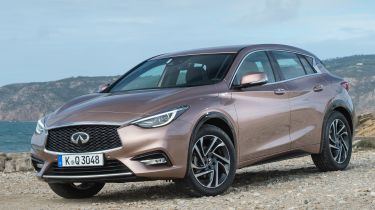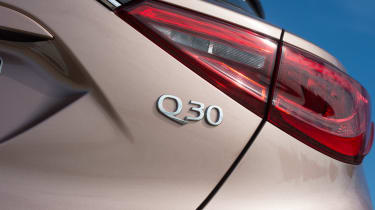Infiniti Q30 review - MPG, CO2 and Running Costs
Economy figures are generally poorer than most rivals, while no engine offers sub-100g/km emissions

Compared to its rivals, the Infiniti Q30 won’t be the cheapest car to run. It won’t break the bank, but compared to the near-identical Mercedes A-Class (with which it shares most of it’s engines) the running costs are higher.
None of the engines drop below 100g/km, and the lowest emissions are 108g/km for the 1.5-litre diesel. This engine also achieves 68.9mpg on a combined cycle, which isn’t that impressive compared to the A-Class or BMW 1 Series, both producing over 80mpg from engines of similar performance.
Going up the range, the 120bhp 1.6-litre turbo petrol engine will achieve 47.1mpg on a combined cycle and emits 138g/km CO2. Go for the more powerful 154bhp DCT automatic model and things improve slightly, but 48.7mpg is hardly worth shouting about. Again, most rivals with similar performance claim greater efficiency.
The 2.0-litre Sport is, as you'd expect, the least efficient. Thanks to four-wheel-drive and an automatic gearbox it emits 156g/km of CO2 and has a combined economy figure of 42.2mpg. This is similar to a BMW 125i, which is notably quicker (and cheaper).
Sitting in the middle of all this is the 2.2-litre diesel, which offers a reasonable but not brilliant mix of efficiency and performance. Infiniti claims it will achieve 57.7mpg from its 166bhp engine and emits 134g/km of CO2.
Insurance groups
Insurance groups range from 13 on the low powered cars to 22 for the most powerful Sport model. In this respect the Q30 does fractionally better than its competition. The BMW 1 Series and Mercedes A-Class are only slightly higher, starting at group 15.








